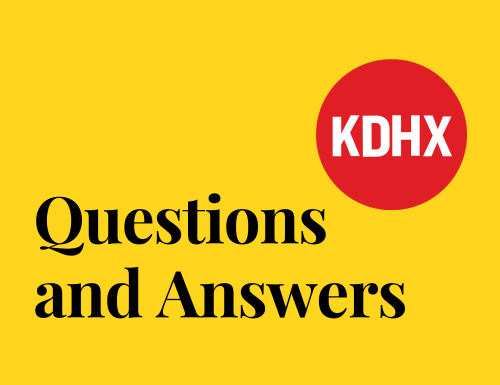
Symphony Preview: Moon over Edinburgh
By Chuck Lavazzi
This weekend guest conductor Elim Chan leads the St. Louis Symphony Orchestra and pianist Ingrid Fliter in a concert that brackets the second installment of the orchestra’s Beethoven piano concerto cycle with a pair of works that evoke strong visual images.
[Preview the music with the SLSO's Spotify playlist.]
 |
| Elizabeth Orgonek Photo: Kajaka Studios |
The concerts open with the first of those two highly visual pieces, “Moondog” by contemporary American composer Elizabeth Ogonek (b. 1989). Written for and premiered by the San Francisco Symphony Orchestra this past January, “Moondog” is too new to be available anywhere online, so the best I can do is refer you to Steve Holt’s interview with the composer for the SFSO.
In it, Ogonek notes that a “moondog” is “kind of halo that happens around the moon because of the way the ice crystals in clouds refract light” and that her intention was to “do a vocalese [a melody without words] for the orchestra. I wanted to evoke this sense of nighttime and dreaminess.”
“My three orchestral gods are Stravinsky, Debussy, and Sibelius,” she says in response to question about what her music sounds like. “I’m a very visual composer. I think when people hear my music, they can get that sense. It tends to be sort of cinematic, not in a “movie music” kind of way, but just visually evocative.” The whole interview is worth a read, but those are the bullet points.
Trivia note: As some of you may be old enough to recall, Moondog (real name: Louis Thomas Hardin, 1916–1999) was also an eccentric composer/performer whose
Next is the Piano Concerto No. 3 in C minor, Op. 37, of Ludwig van Beethoven (1770–1827). A dramatic work that was the beginning of Beethoven’s break with the influences of Mozart and Haydn, the Third Concerto shows the composer in a role for which he is not, in my experience, always given enough credit: that of an "early adopter" of technology.
 |
| Beethoven in 1803 Painted by Christian Horneman |
The technology in question is that of the piano. At the time Beethoven was writing the C minor concerto (around 1800, although he had ideas for it a few years earlier), major technological advances were being made in the design and construction of the instrument. It was becoming bigger and heavier; the sound was getting more robust and the range of notes wider. When Beethoven began composing in the 1780s, the piano (then called the fortepiano) was basically an amped-up harpsichord with strings that were struck instead of plucked and a range of around four or five octaves. By the time he died in 1827, the piano had evolved into something closely resembling the contemporary concert grand, with a range of nearly eight octaves and the ability to produce the kind of thunderous climaxes that composers like Franz Liszt loved so much.
A major player in this technological revolution was the English firm of John Broadwood and Sons. As part of their marketing campaign, they sent their new pianos to Beethoven, with the result that Beethoven made use of the expanded range of notes for his new concerto. “As originally composed,” wrote René Spencer Saller in program notes for the SLSOs 2016 performance of the work, “his Third Concerto requires the soloist to play a high G, which is believed to be the earliest instance of that particular note in the piano repertory.”
That said, it’s hard to be sure exactly what the piano part looked like for the concerto’s 1803 premiere at the Theater an der Wien since it hadn’t been written down yet. Beethoven was the soloist and played the whole thing from memory, which drove Ignaz von Seyfried (his student and page turner) to distraction. “I saw empty pages with here and there what looked like Egyptian hieroglyphs,” he would later recall, “unintelligible to me, scribbled to serve as clues for him… So, whenever he reached the end of some invisible passage, he gave me a surreptitious nod and I turned the page.” Fortunately, it became one of those stories that get funnier after the fact. “My anxiety not to miss such a nod amused him greatly,” wrote Seyfried, “and the recollection of it at our convivial dinner after the concert sent him into gales of laughter.”
The soloist for the concerto’s second Viennese performance a year later was Ferdinand Ries (another pupil) when, happily, everything was written down and there were no blank pages.
 |
| The ruins of Holyrood Abbey By Kaihsu at English Wikipedia |
The concerts conclude with the Symphony No. 3 in A minor, op. 56, ("Scottish") by Felix Mendelssohn (1809–1847). Although not completed until 1842, the symphony’s genesis dates back to an 1829 walking tour of the British Isles, when Scotland in general and Edinburgh in particular made a strong impression on him. He got the idea for the slow introduction to the first movement when he visited the ruined Holyrood Chapel in Edinburgh. "In the evening twilight," he wrote, "we went today to the palace where Queen Mary lived and loved... Everything round is broken and mouldering and the bright sky shines in. I believe I today found in that old chapel the beginning of my 'Scottish' Symphony."
But how “Scottish” is the Symphony No. 3, really? The composer himself never referred to it as anything other than his third symphony, and as this week’s program notes remind us, he was “notoriously reluctant to assign explicit programs or narratives to his music.” Eric Bromberger (in notes for the San Diego Symphony), went so far as to declare that the work “tells no tale, paints no picture, nor does it quote Scottish tunes."
On the other hand, British composer and conductor Julius Harrison (in "The Symphony," edited by Robert Simpson, 1967) thought the symphony "illustrates the near-scenic aspect of Mendelssohn's romantic art" and felt that the jaunty clarinet theme of the Vivace non troppo second movement has "a touch of 'Charlie is My Darling' about its dotted quavers—something Mendelssohn may have remembered and set down." Given that the composer’s 1829 walking tour included a bagpipe concert, a visit to Sir Walter Scott, and extensive hiking around the highlands, that wouldn’t be surprising.
I fall more into the late Mr. Harrison's camp, but wherever you come down on the "Scottishness" of this music, there's no getting around its unflagging appeal and elegant construction. To hear this music is to love it. It was the last Mendelssohn symphony to be performed in the composer’s lifetime (the Fourth and Fifth symphonies were performed before the Third but published after it). Not a bad swan song, as those things go.
The Essentials: Elim Chan conducts the SLSO and piano soloist Ingrid Fliter in a program consisting of Beethoven’s Piano Concerto No. 3, Mendelssohn’s Symphony No. 3 (“Scottish”), and the symphonic poem “Moondog” by contemporary composer Elizabeth Ogonek. Performances take place at the Touhill Center on Friday at 10:30 am and Saturday at 7:30 pm, October 20 and 21. The Friday morning performance will be broadcast Saturday evening on St. Louis Public Radio and Classic 107.3 and will be available for streaming for a limited time at the SLSO web site.



